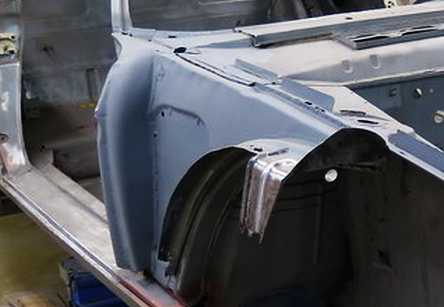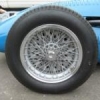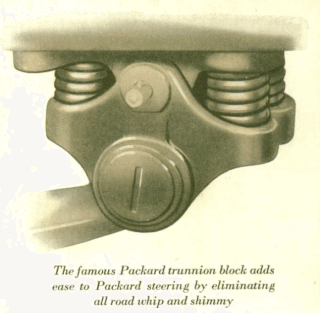You will recall that independent front suspension (IFS) started to be widely adopted from the early thirties onwards. The GP Auto Union and Mercedes Benz come to mind, also the Dubonnet system, adopted by General Motors in the USA as well as Europe. By about the mid-thirties, the trend gained momentum, and many more companies and individuals came up with their own versions, and quite a wide variety they were.
But one thing that most, if not all, systems had in common, was that each wheel was constrained to move parallel to its original position, or you might say it maintained the same camber angle, in relation to the cars structure. Which of course, meant that when the car rolled in a turn, the front wheels rolled with it, both acquiring a negative camber (outward lean) in relation to the road surface.
This is easy to visualise if you think of the action of any of the well-known systems of that day:
Auto Union (Porsche) twin trailing arms
Mercedes Benz parallel, equal length wishbones
Dubonnet single trailing arm
Morgan & Lancia sliding pillar
The effect of this behaviour on cornering power took a while to sink in, but when it did, perhaps around the late forties/early fifties, unequal length wishbones started to appear, gradually achieving definitive form with non-parallel static settings. From then on, it was a matter of refining the geometry to take account of circumstances, not least tyre development. (For some reason, French designers were particularly drawn to the early concept, as seen on the SEFAC, the CTA-Arsenal and the Gordini T32 Straight-8, though there were others too, such as Alta)
I have never been able to discover the reason(s) that so many designers, including the best, strove to achieve parallel movement in those early days, sometimes with quite elaborate mechanisms, many of which imposed very heavy concentrated loads where they met the chassis, almost certainly causing flexure, as well as rapid wear of the pivot/rubbing surfaces. Some descriptions point out that constant track (and sometimes constant wheelbase) was ensured by the system under review; the significance of this escapes me. Has anyone come across any literature that might provide an insight, or have any personal views on this subject?

















